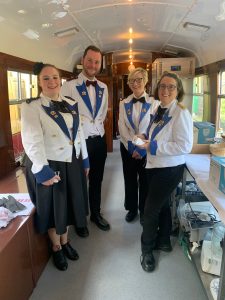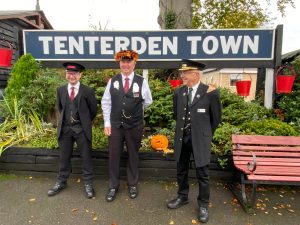Improving Communication
How many times have we all heard the comment, “we need to communicate better”. It's a challenge not unique to the K&ESR but one faced by organisations far and wide - poor communication. But it is not someone else’s problem to get right. Think of good communication as a tool in your own hands, not some kind of magical spell. Even with all the high-tech gadgets and systems, it's not about the devices – it's about you. It's about your choice to share what you know, your curiosity to learn, and your grasp of how knowing the right stuff which keeps us safe and successful. It's in all of our hands!
From this perspective, let's explore practical steps to enhance communication throughout KESR, starting with all of us and having a commitment to better dialogue.
The three critical messages are:
· Every Voice Matters: In the journey toward improved better communication, remember that every voice within the K&ESR community is invaluable. Your insights, questions, and suggestions are the building blocks of our collective success. Encourage others to speak up, and don't hesitate to do the same.
· Embrace Curiosity: Be curious, not just about the tasks at hand but also about the people around you. Seek to understand their perspectives, experiences, and challenges. Curiosity fuels learning and fosters deeper connections, making communication richer and more effective.
· Safety Is Everyone's Responsibility: In the railway industry, safety is paramount. Enhanced communication is a vital part of ensuring that safety is maintained. Always be proactive in sharing safety-related information and prompt in seeking clarification. Remember, every piece of information shared or sought could make a difference in keeping our railway community secure.

Everything we say must be practical and actionable. Here's how everyone, including me, from Board members, managers, staff, volunteers, and all members, can collectively and actively improve communication:
· Start with Active Listening: We all should and can actively listen when someone is speaking. Ensure they feel heard and understood. Ask clarifying questions to confirm your comprehension.
· Creating an Open Environment: We must foster a culture where everyone feels comfortable sharing ideas, opinions, and concerns without fear of judgment.
· Ask for Feedback: Encourage and accept feedback from colleagues and members. We all need to regularly ask, "How can we improve our communication?"
· Regular Check-Ins: With our groups, committees, and teams we can Implement regular ‘check-in sessions’, either one-on-one or in group settings, to discuss progress, challenges, and ideas.
· Be Approachable: Make yourself approachable and available for discussions. Approachability encourages open conversations.
· Use Multiple Channels: Diversify communication channels, from old fashion talking to face to face/ in person meetings, emails, instant messaging, and video calls, to accommodate everyone’s different preferences.
· Share Information Proactively: Don't wait for others to ask for information; share it proactively when relevant.
· Respect Different Communication Styles: Recognise that not everyone communicates the same way. Adapt to different styles and preferences.
· Set Clear Objectives: We all can do better by defining clear communication objectives for meetings and projects. Ensure everyone knows what needs to be achieved.
· Embrace Technology: Utilise tools and platforms that facilitate collaboration and information sharing among your individual groups or to the wider membership.
· Ask for Clarity: If you receive unclear messages, don't hesitate to ask for clarification. It's better to ensure mutual understanding.
· Celebrate Communication Successes: Acknowledge and celebrate when communication efforts lead to positive outcomes. This reinforces the importance of good communication.
· Address Poor Communication: If you identify poor communication or misunderstandings, address them promptly to prevent further issues.
· Collaborate on Solutions: Involve others in finding solutions to communication challenges. Collaborative problem-solving can be more effective.
· Share the 'Why': When communicating decisions, I always try to explain the "why" behind them. This helps people understand the context and reasoning.
· Two-Way Street: Remember that communication is a two-way street. Encourage your others to actively participate in discussions.
· Visual Aids: When appropriate use visuals, charts, and graphics when presenting information to enhance clarity, but equally don’t overuse.
· Streamline Communication Tools: We need in many cases to simplify communication tools and systems to avoid overcomplication that can hinder effective communication.
· Encourage Learning: We need to encourage continuous learning and improvement in communication skills for everyone within the organisation.

Small changes today can lead to significant improvements in communication. Whether you're a director, manager, staff, volunteer, or member, everyone has a role to play in creating a more open, effective, and collaborative communication environment.
By all of us putting these principles into action, we can transform KESR into an organisation where communication thrives, leading to a safer, more efficient, and most importantly a more enjoyable railway.
Robin Coombes
General Manager
For K&ESR Members Newsletter November 2023


